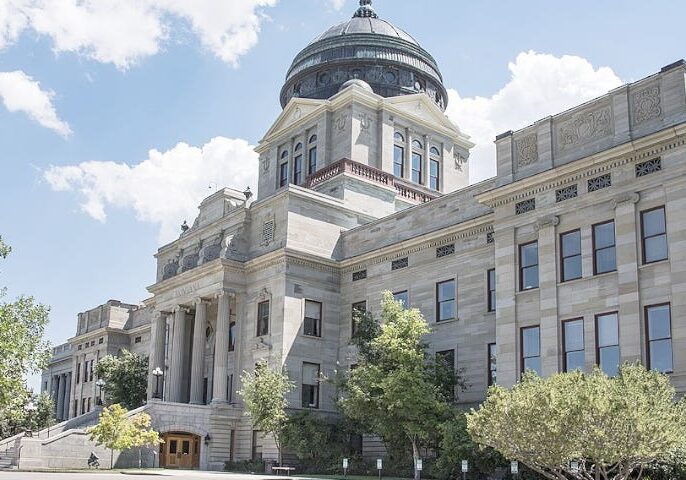Report: Majority of Montana’s Long-Term Debt Tied to Pensions
Pensions account for 60 percent of Montana’s state and local long-term debt.

This report was originally published by The Montana Chronicles
By Zachery Schmidt
Oct 31, 2025
Sixty percent of Montana’s state and local long-term debt is tied up in its pension program, according to a new report.
The Reason Foundation released its State and Local Government Finance Report last week, analyzing the debt portfolios of all 50 states. The data in the report reflects figures from fiscal year 2023.
Mariana Trujillo, co-author of the report, told The Montana Chronicles that pension debt is “the unfunded portion of promised retirement benefits to public employees.” She added that this type of debt accounted for “an outsized share” of Montana’s total debt.
Montana’s pension debt is much higher than the national average of 32 percent.
Trujillo, who is the Reason Foundation’s managing director of government finance, said the debt doesn’t mean Montana has more pension obligations than other states. Instead, it shows that the Treasure State is a leaner state with “generally” lower overall debt, which makes the pension liability appear as a larger share of the state’s balance sheet.
Trujillo’s co-author, Jordan Campbell, told The Chronicles that just because pension debt accounts for most of Montana’s long-term debt, it doesn’t mean the state’s pension systems “are worse off.”
“The state’s pension debt of $3,904 per capita is below the national average of $4,643,” said Campbell, who is a senior quantitative analyst at Reason Foundation.
However, Campbell warned the pension debt should be a focus for the state.
“Unfunded pension debt exposes local governments and taxpayers to long-term financial risk,” he noted.
Another area that accounts for a large share of Montana’s long-term debt is the state’s school districts.
State school districts “carry about one-third of Montana’s long-term debt,” which is approximately $2.2 billion, Trujillo said. She noted this is “more than any other local government category, except for state government.”
School districts report “the share of the total pension debt that they are responsible for based on how many employees they have,” Trujillo explained.
Campbell said school districts will always be responsible for their debt, regardless of enrollment levels.
Like many states, Montana school districts partake in a “cost-sharing, state-administered pension, meaning they don’t directly control the plan’s debt,” Campbell stated.
“Contributions are calculated as a percentage of payroll, not headcount. Other factors include changes in the plan’s investment returns, actuarial assumptions, plan structure, and state-level funding policy decisions,” he said.
In Montana, the pension plans for public teachers and state employees are funded at about 75 percent of the amount needed to fully cover future obligations, Campbell noted.
This means that the “plan has only accumulated 75 cents for every $1 of benefits owed,” according to Campbell.
“That 25% gap represents a debt—unfunded liabilities—that must be funded. If investments underperform expectations, the shortfall grows, putting further pressure on budgets and taxpayers to make up for the difference,” he added.
Even after factoring in pension and school district debt, Montana has some of the lowest long-term debt in the country.
“Montana’s total state and local government long-term debt is $7 billion, which amounts to $6,472 per capita, less than half of the national average of $14,741,” Trujillo stated.
Campbell noted Montana has the 13th-lowest debt ratio among states, which he described as an “important financial health metric.”
Montana is “better than most states in terms of per capita debt,” Trujillo said.
She added that Montana’s state and local debt amounts to “$10.5 billion, or $9,666 per resident,” which is 53 percent of the national average of $18,376.
However, according to Trujillo, states surrounding Montana, such as South Dakota and Idaho, are doing a lot better. She described these states as having no pension debt.
Campbell and Trujillo identified Idaho and Utah as the two states in the best financial situation.
On the aggregate level, Campbell said red states did better than blue states with debt. The report found the top five states with the most long-term debt per capita for fiscal year 2023 were Connecticut, New Jersey, Hawaii, Illinois and Delaware.
On the other side, the states with the lowest long-term debt per capita were Nebraska, Tennessee, Utah, South Dakota and Oklahoma.

Zachery Schmidt is the founder of The Montana Chronicles and a freelance journalist with nearly a decade of experience in conservative media, with bylines in The Tennesse Star, Daily Caller, and The College Fix.
Categories: Government, Labor, Money
Don’t miss the week’s top Montana stories
Join readers across Montana who rely on WMN for independent reporting.
Unsubscribe anytime. Want to support WMN? Upgrade for $4/month →





